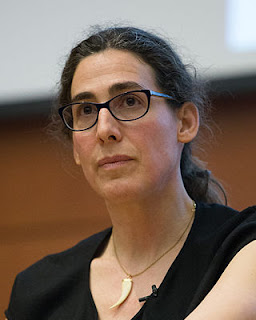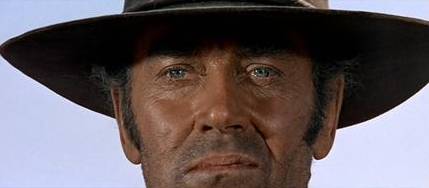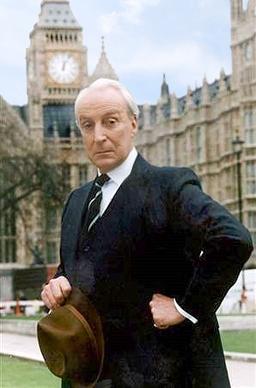by John M. Floyd
When I first purchased a smartphone several years ago I was stunned by all the things I was able to do, in addition to trivial tasks like making/receiving telephone calls. All of a sudden I could text, e-mail, Google, check the weather, watch the stock market, leave myself reminders, listen to music, and use my phone as a flashlight, calculator, compass, level, alarm clock, stopwatch, GPS device, calendar, radio, camera, and video recorder. I could also use these functions to become (even more of) a pain in the ass to friends, family, and total strangers, but I try to minimize that.
Because of all these "extras," my mobile phone became an item not only of necessity but of great convenience. And I love finding out about new iPhone apps and shortcuts.
Which brings me to my topic for today. My home computer, which happens to be an iMac (I finally leaped out of Windows several years ago and fled screaming to the Apple orchard), is used partly for e-mail, Netflix, Facebook, Web surfing, and such--but I use it mostly for my writing. For creating and submitting stories and cover letters, and for all the associated research, printing, copying, and recordkeeping.
There are, of course, some shortcuts to all that stuff as well.
Bear with me. Much of what follows is basic, and consists of hints and tips about computers, writing, manuscripts, etc., that you probably already know. But they're also things that have been extremely helpful to me as a writer. (And remember, all you novelists, I write mostly short stories--that's me up there waving to you from the cheap seats--so the submission tips are geared toward shorts.)
Here they are, in no particular order:
1. Copy/Cut/Paste using the keyboard: Crtl-C, Ctrl-X, Ctrl-V. Many of my author friends still choose to click on these buttons in the Word toolbar, but to me it's much faster and easier to do it via the keyboard shortcuts. (For the Mac, the Command key is used instead of Ctrl.)
2. Use the mouse to enlarge documents and images. In most applications, you can hold down the Control key and use the mouse "wheel" to zoom in and out, thus making text easier to read and photos easier to see. Sometimes you can also double-click the mouse to enlarge the image, as in Google Maps.
3. Replace italics with underlining, and vice versa. Some markets (
AHMM is one) prefer underlining instead of italics, in their submissions. If you have a completed manuscript that includes italics, it's nice to be able to change all italicized text to underlined text at one swoop. This can be done by following these instructions: Open "Find and Replace," click in the "Find What" box, click on "Format" in the dropdown menu, then click "Font" and choose "Italic" and click OK. Then click in the "Replace With" box, and (under Format/Font) choose a single underline under "Underline Style" and click OK. Then click "Replace All," and it's done. To change it back again, reverse the operation.
4. "Find" using the keyboard: Ctrl-F. I need to locate words and phrases so often, I prefer using keys rather than the mouse and the toolbar. (Again, Apple users should substitute the Command key for Ctrl.) Another keyboard shortcut I use a lot is Ctrl-A to "Select All."
5. Turn off Grammar Check. If you want the Word police to be constantly blowing their whistles and shouting, that's up to you. To me, the grammar-checking feature is frustrating at best and maddening at worst. As a writer of fiction, I happily fragment sentences, splice commas, split infinitives, combine uncombinable words, and make up others (like uncombinable), and I don't want my computer telling me not to. (Did I just end that sentence with a preposition . . . ?)
6. Save items in your "Reading List." Reading List is a separate part of the Safari web browser's bookmarking feature that allows you to save articles/information that you might want to come back to and read later. Unlike regular bookmarking, this makes the content available even when you're offline. Entries are intended to be temporary rather than permanent, and are easily deleted.
7. Replace straight quotes with curly quotes. As anyone who's converted Courier to TNR knows, it's difficult to find and change all the straight-up-and-down apostrophes and quotation marks in a manuscript to proper "curved" apostrophes and quotes. A quick way to do it is to just pull up "Find and Replace" and key a single quotation mark into both the "Find What" box and the "Replace With" box and click "Replace All." Then do the same with double quotation marks. When finished, all apostrophes, single quotes, and double quotes should now be corrected.
8. Turn off widows and orphans. This sounds cruel, right? What I mean is turn off the
suppression of widows and orphans. If widow/orphan control is left activated, you'll wind up with some manuscript pages that have way too much blank space left at the bottom. It doesn't matter one whit to me whether there might be a single ending line of a paragraph at the top of a page or a single beginning line of a paragraph at the bottom of a page. I think a consistent appearance is far more important.
9. Insert a # (or similar character) as part of your scene breaks. All that's really required to signal a scene break is an extra double-space, and for years that's exactly how I indicated one. Then I had a bad experience: an editor printed my accepted story
without including one of those scene breaks. He just left it out completely and continued the story without any break there at all. Since then, I have always double-spaced once, then typed a centered character or group of characters (#, *, ***, etc.), and then double-spaced once more. My book publisher prefers three asterisks, I prefer the #.
10. Highlight using the arrow keys. Sometimes it's difficult to properly highlight certain text with just the mouse. If ever you need to be exact, and (for example) highlight everything up to a particular character but not
including that character, you can always fine-tune by holding down the Shift key while pressing the right- or left-arrow key.
11. Copy/paste a manuscript into the body of an e-mail. If a market requires submission of a manuscript
as a part of the e-mail rather than as an attachment, it can be hard to paste the story directly in to the body of the e-mail without goofing up the spacing and formatting. Here's a good way to do that without risk: Save the manuscript first as a plain-text (.txt) file in your Word program, then close it and open it again, and
then paste it into your e-mail. It will now be formatted correctly. NOTE: Saving an ordinary (TNR, .doc) manuscript in plain-text will automatically convert everything to Courier 10-point font whether you want it to or not, and will lose any special features like italics and underlining. (You'll see this only after you close the file and open it again.) Emphasized text can still be indicated, however, by typing an underscore (_) immediately before and after any text (letter, word, phrase, whatever) that should've been italicized or underlined. By the way, it never hurts to e-mail the submission to yourself first, to check out the formatting, before e-mailing it to the publication.
12. Write your story title on the inside flap of your SASE. Most short-story submissions are now made electronically, thank goodness--but some markets still require snailmailed submissions. And if you wind up doing something called
multiple submissions (subbing another story or two to them before you've heard back from the first), there's something you should know. If they reject one of your submissions and the rejection letter doesn't say
which story was rejected (believe me, that happens), then you have a problem. Solution: When you submit a story, lightly hand-print the title of the story in pencil on the inside flap of its accompanying SASE. Then, if you receive a rejection letter, you can look inside the SASE flap and see which story got the axe--and submit it elsewhere.

Those are just a few timesavers and stress-relievers that come to mind--I'm sure I'll think of more as soon as this column is posted. And, again, I realize that a lot of this is preaching to the choir.
Please let me know of any other handy tricks-of-the-trade you might've discovered. I would especially like to find out how to determine, beforehand, whether whatever story I'm submitting will be accepted or rejected.
Dream on, right?
 Because they take so long to develop they are considered
the "old growth forest" of the sea and no one knows for sure how long
it takes to replenish a field that has been harvested. One of the
nasty parts of the trade is that until you dig the clam out of the sand
(sometimes two feet down) you can't tell if it is valuable or
relatively worthless.. Since pulling it out of the sand kills it,
that counts as part of your fishing quota, whatever quality it turns out to
be.
Because they take so long to develop they are considered
the "old growth forest" of the sea and no one knows for sure how long
it takes to replenish a field that has been harvested. One of the
nasty parts of the trade is that until you dig the clam out of the sand
(sometimes two feet down) you can't tell if it is valuable or
relatively worthless.. Since pulling it out of the sand kills it,
that counts as part of your fishing quota, whatever quality it turns out to
be.








































